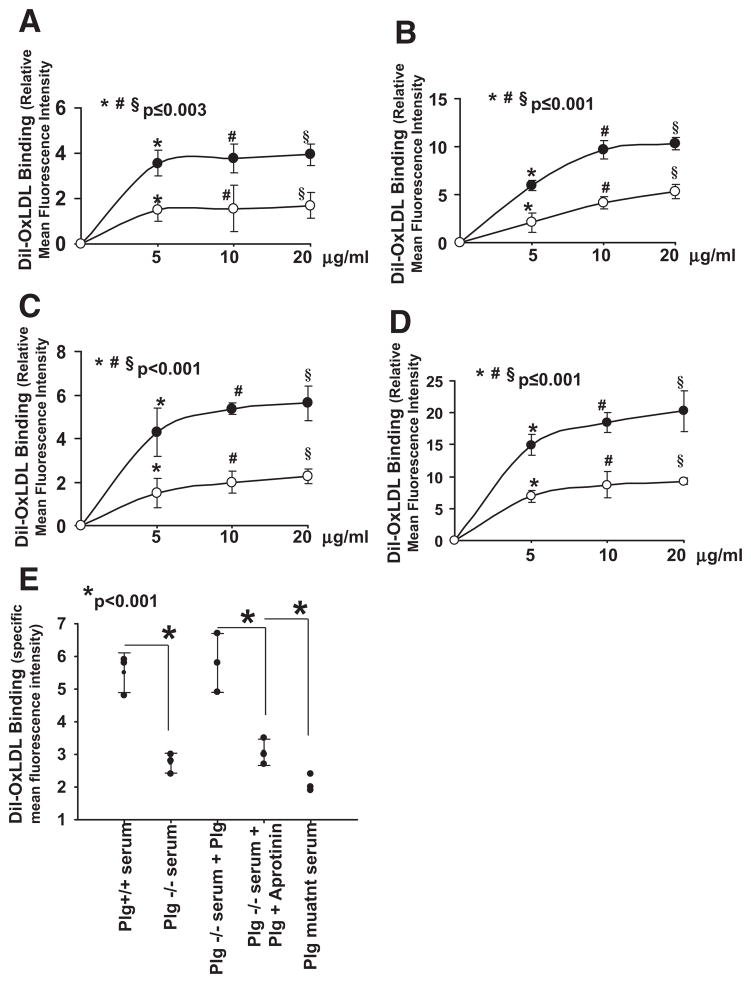Figure 3.
Role of plasminogen (Plg) in oxidized low-density lipoprotein (OxLDL) binding and internalization. A and B, Thioglycollate-elicited peritoneal macrophages derived from Plg+/+ (●) or Plg−/− (○)mice were allowed to bind (A; 30 minutes at 4°C) or to internalize (B; 2 hours at 37°C) Dil-OxLDL. C and D, Peritoneal macrophages from Plg+/+ mice were cultured in the presence of serum derived from Plg+/+ (●) or Plg−/− mice (○) and then allowed to bind (C) or to internalize (D) varying concentrations of Dil-OxLDL. Points are ±SD of means from triplicate samples. E, Macrophages derived from Plg+/+ mice were cultured in Plg+/+, Plg−/− serum, or serum from Plg active-site mutant mice. In some panels, Plg (1 μmol/L) or aprotinin (blocks plasmin activity) was added. Cells were washed and allowed to bind Dil-OxLDL in the presence or absence of excess unlabeled OxLDL. Bound or internalized Dil-OxLDL was measured by flow cytometry. Specific binding values are displayed and were obtained by subtracting residual nonspecific binding in the presence of excess OxLDL. Each dot is an average of triplicates.

